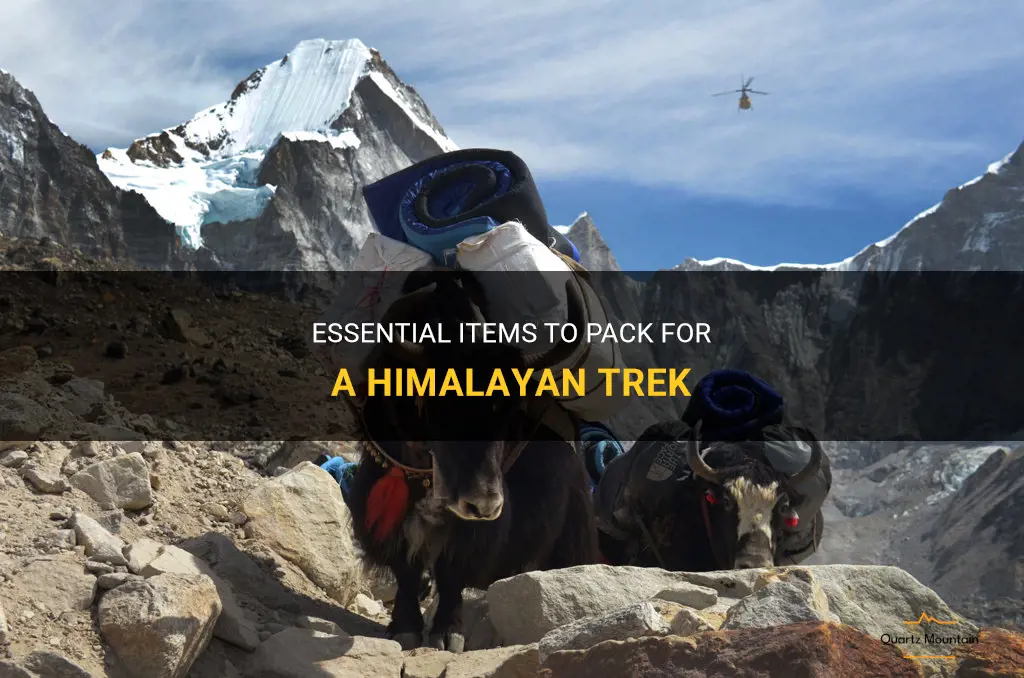
The Himalayas, with its towering peaks and breathtaking landscapes, have long been a destination for adventure seekers looking to embark on an epic trekking journey. However, as captivating as the Himalayan trails may be, they also present a formidable challenge that requires careful preparation and packing. From sturdy footwear to high-altitude gear, there are several essential items that every trekker must include in their backpack before embarking on a Himalayan adventure. In this guide, we will take a closer look at the must-have gear that will make your Himalayan trek safe, comfortable, and unforgettable.
| Characteristics | Values |
|---|---|
| Temperature | Varies between -10°C to 15°C |
| Altitude | 4000m to 6000m |
| Duration | 7-10 days |
| Terrain | Steep slopes, rocky trails, snow-covered paths |
| Clothing | Layered clothing, thermals, windproof jacket |
| Footwear | Waterproof hiking boots, woolen socks |
| Equipment | Sleeping bag, tent, trekking poles |
| Food | High-calorie, lightweight meals, energy bars |
| Water | Water purification tablets, hydration pack |
| First Aid Kit | Bandages, pain relievers, altitude sickness medication |
| Backpack | Lightweight, rainproof backpack |
| Other Essentials | Sunglasses, sunscreen, hat, gloves, headlamp |
What You'll Learn
- What essential items should I pack for a Himalayan trek?
- Are there any specific clothing recommendations for a Himalayan trek?
- What equipment or gear should I bring on a Himalayan trek?
- Are there any specific medications or first aid supplies I should pack for a Himalayan trek?
- What are some important considerations for packing food and water for a Himalayan trek?

What essential items should I pack for a Himalayan trek?
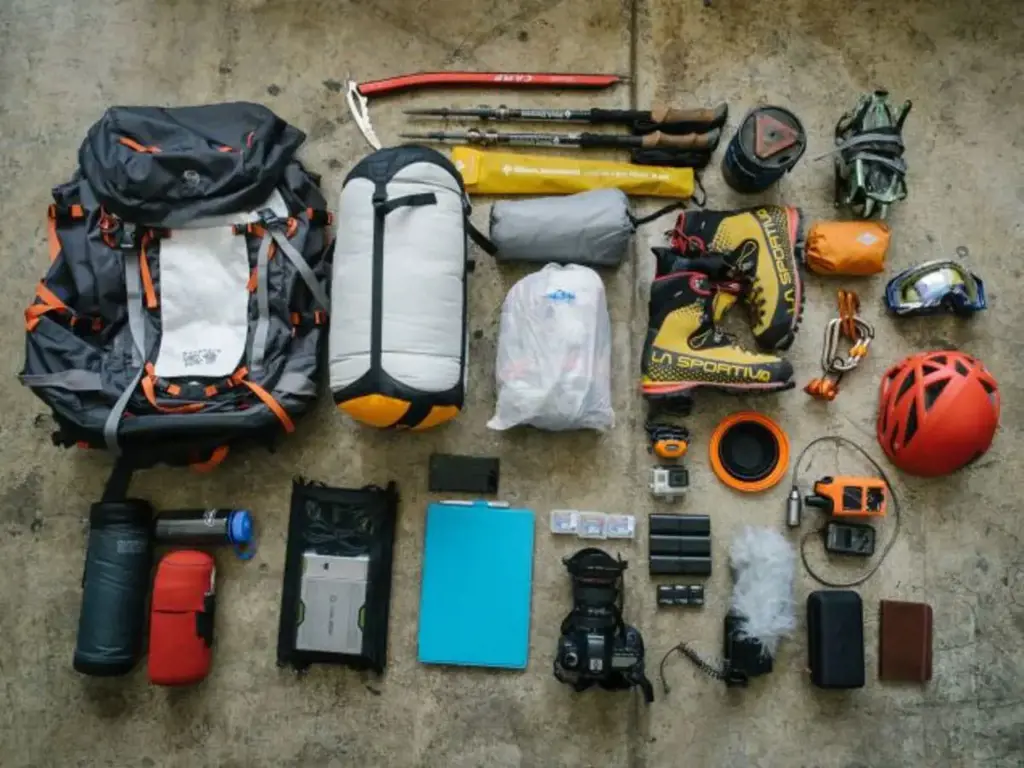
When embarking on a Himalayan trek, it is important to pack wisely to ensure your safety and comfort throughout the journey. The high altitudes and rugged terrains of the Himalayas require adequate preparation and the right gear. Here is a list of essential items you should pack to make your Himalayan trek a successful and enjoyable experience.
- Clothing: Layering is key when it comes to dressing for a Himalayan trek. Start with moisture-wicking base layers that will keep you dry and comfortable. Pack long-sleeved shirts, lightweight pants, and a warm fleece jacket for insulation. A waterproof and windproof outer layer will protect you from the harsh elements. Don't forget to pack thermals and a hat or beanie to keep your head warm.
- Footwear: Invest in a good pair of hiking boots that provide ankle support and have sturdy soles for traction. Break them in before your trek to avoid blisters and discomfort. It is also advisable to carry a pair of lightweight and waterproof sandals for river crossings or relaxing at the campsite.
- Sleeping Gear: A high-quality sleeping bag designed for sub-zero temperatures is essential for a Himalayan trek. Ensure that it is lightweight and compact, as you will be carrying it on your back. A sleeping pad or mat will provide cushioning and insulation from the cold ground.
- Backpack: Opt for a durable and comfortable backpack that distributes weight evenly and has a capacity of around 50-70 liters. It should have multiple compartments for easy organization and accessibility. Pack a waterproof cover for your backpack to protect your belongings from rain or snow.
- Trekking Poles: Trekking poles provide stability and reduce strain on your joints while navigating steep terrain. They also help maintain balance and improve your overall trekking experience. Invest in lightweight and collapsible poles that can be easily packed when not in use.
- Water and Snacks: Stay hydrated by carrying a sturdy water bottle or hydration bladder to replenish fluids throughout the day. Additionally, pack high-energy snacks like nuts, trail mix, energy bars, and chocolate to keep you fueled during long hikes.
- Navigation Tools: Carry a detailed map of the area and a compass to navigate through the Himalayan trails. It is also advisable to have a GPS device or a smartphone with GPS capabilities as a backup. Ensure that you have spare batteries or a portable solar charger for electronic devices.
- First Aid Kit: A comprehensive first aid kit is a must-have for any trekking expedition. Include basic supplies like bandages, dressing pads, adhesive tapes, antiseptic ointments, painkillers, and any personal medications you may require. Familiarize yourself with basic first aid procedures and consult a healthcare professional for any specific medical advice.
- Toiletries and Personal Hygiene: Pack travel-sized toiletries like a toothbrush, toothpaste, biodegradable soap, toilet paper, wet wipes, and sunscreen. It is important to follow Leave No Trace principles and avoid polluting the natural environment.
- Miscellaneous Items: Don't forget to pack a headlamp or flashlight, extra batteries, a multi-tool, a whistle for emergencies, a lightweight towel, a camera to capture breathtaking views, a power bank, and a lightweight camping stove if you plan on cooking your meals.
Remember, packing light is essential for a Himalayan trek as you will be carrying all your belongings on your back. Prioritize items based on their necessity and weight, and eliminate anything that is not essential. Always check the weather forecast and consult with experienced trekkers or local guides for any specific recommendations or requirements for the region you are trekking in. Stay safe, respect the environment, and enjoy the awe-inspiring beauty of the Himalayas.
Essential Items to Pack for a 5-Day Trip to Nebraska
You may want to see also

Are there any specific clothing recommendations for a Himalayan trek?
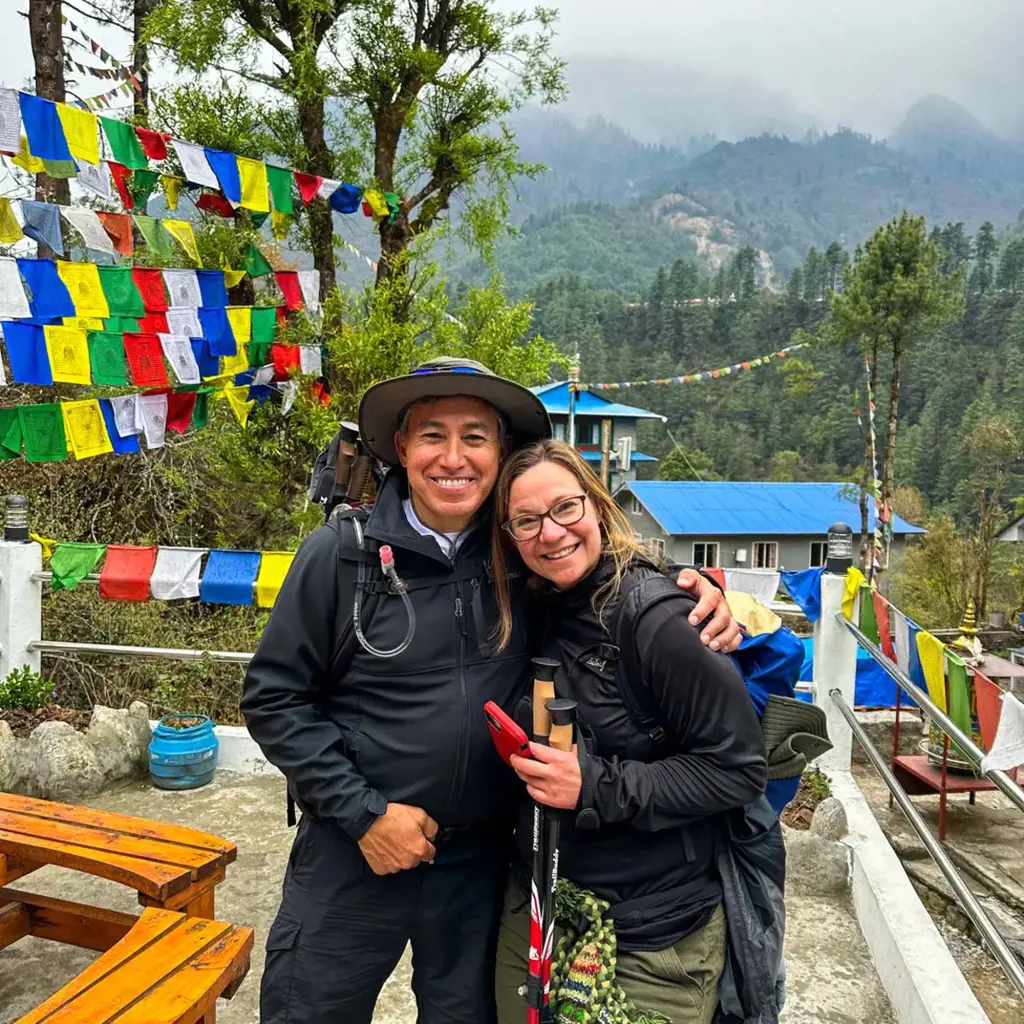
When planning a trek in the Himalayas, it is essential to consider the specific clothing recommendations to ensure a comfortable and safe experience. The Himalayan region is characterized by its extreme weather conditions, high altitudes, and unpredictable climate. Therefore, being well-prepared with appropriate clothing can make a significant difference in the overall trekking experience. Here are some essential clothing recommendations for a Himalayan trek:
- Layering System: The key to staying warm and comfortable in the Himalayas is adopting a layering system. This involves wearing multiple layers of clothing that can be easily added or removed according to the changing weather conditions. The layering system typically consists of a base layer, mid-layer, and an outer shell.
- Base Layer: The base layer is in direct contact with your skin and should be made of moisture-wicking materials such as merino wool or synthetic fabrics. These materials help absorb sweat and keep you dry to prevent hypothermia. Avoid wearing cotton as it retains moisture and takes longer to dry.
- Mid-Layer: The mid-layer provides insulation and should be made of materials such as fleece or down. Fleece jackets and pants are lightweight, breathable, and provide excellent insulation. Down jackets are warmer but bulkier. Choose a mid-layer based on the expected temperature and your personal preference.
- Outer Shell: The outer shell protects you from wind, rain, and snow. A waterproof and windproof jacket, preferably with a hood, is essential. Look for jackets made with Gore-Tex or similar materials that offer breathability and durability. Additionally, invest in waterproof and windproof pants to complete your outer shell.
- Trekking Pants: Opt for moisture-wicking and quick-drying trekking pants that provide freedom of movement. Convertible pants that can be converted into shorts are a convenient option to adapt to changing temperatures.
- Warm Insulated Jacket: As you ascend higher altitudes, the temperature drops significantly. Carrying a warm insulated jacket is crucial to staying warm during breaks and at camp. Down jackets are the warmest option, but synthetic alternatives are also effective and more resistant to moisture.
- Headwear: Protecting your head from the sun, cold, and wind is essential. Carry a lightweight, moisture-wicking hat for protection against the sun. A warm beanie or balaclava is necessary for colder temperatures, especially during early morning starts and at higher altitudes.
- Gloves: Invest in a good pair of waterproof and insulated gloves to protect your hands from the cold and wind. Consider carrying an extra pair as a backup in case one gets wet or damaged.
- Footwear: Choose sturdy, waterproof, and supportive trekking boots that are well-broken in before the trek. It is essential to protect your feet from blisters, cold, and uneven terrain. Woolen or synthetic socks that wick away moisture are ideal for keeping your feet dry and warm.
- Accessories: Sunglasses with UV protection are crucial to shield your eyes from the intense sunlight at high altitudes. A buff or a scarf can be used to protect your neck and face from cold winds and dust. Don't forget to carry sunscreen with a high SPF to protect your skin from the strong mountain sun.
Remember, the weather in the Himalayas can be unpredictable, and conditions can change rapidly. It is crucial to stay prepared with versatile and durable clothing options that can adapt to various weather conditions. Additionally, consult with experienced trekkers or tour guides for more specific recommendations based on the duration and route of your trek. By following these clothing recommendations, you can ensure a safe and enjoyable trekking experience in the magnificent Himalayan region.
Essential Items to Pack for a Trip to Kauai
You may want to see also

What equipment or gear should I bring on a Himalayan trek?
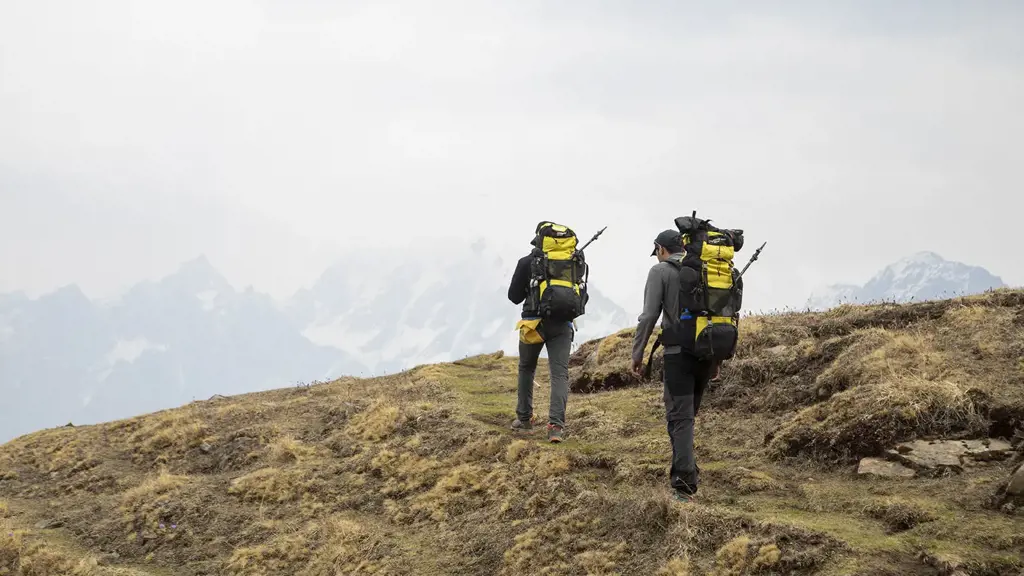
Heading: What equipment or gear should I bring on a Himalayan trek?
Introduction:
Trekking in the Himalayas is a challenging yet rewarding adventure that requires careful planning and preparation. The rugged terrain, high altitude, and unpredictable weather conditions make it necessary to have the right equipment and gear to ensure a safe and enjoyable trek. In this article, we will discuss the essential equipment and gear that you should bring on a Himalayan trek.
Clothing:
Layered clothing is essential for a Himalayan trek as temperatures can vary greatly throughout the day. You will need a base layer for moisture-wicking, an insulating layer for warmth, and an outer layer for protection against wind and rain. It is recommended to bring a waterproof jacket, thermal undergarments, quick-drying pants, fleece jackets, gloves, hats, and a pair of sturdy trekking boots.
Backpack:
A durable and spacious backpack is crucial for carrying all your gear. Look for a backpack with padded straps and a hip belt for added comfort. You should also consider bringing a rain cover for your backpack to protect your belongings during wet weather.
Sleeping bag:
A good quality sleeping bag that can withstand sub-zero temperatures is essential for a Himalayan trek. Look for a sleeping bag that is lightweight, compact, and has a temperature rating suitable for the altitude and season you will be trekking in.
Trekking poles:
Trekking poles provide stability and reduce the strain on your knees and legs, especially during steep ascents and descents. Look for lightweight and collapsible trekking poles that can be easily packed in your backpack when not in use.
Navigation tools:
Having a reliable compass, map, and GPS device is essential for navigating through the Himalayan trails. Familiarize yourself with the route and make sure to have a backup plan in case of any unforeseen circumstances. It is also recommended to carry a headlamp or torch with extra batteries for trekking in low light conditions.
Hydration system:
Staying hydrated is crucial in high altitude environments. Carry a water bottle or hydration bladder with a capacity of at least two liters. Make sure to treat or purify any water obtained from natural sources to avoid waterborne illnesses.
First aid kit:
A well-equipped first aid kit is a must-have on any trek. Include items such as bandages, antiseptic ointment, painkillers, blister treatment, and any personal medications you may require. It is advisable to learn basic first aid techniques and carry a comprehensive guidebook for emergencies.
Food and snacks:
Pack lightweight and high-energy food items such as protein bars, nuts, dried fruits, and instant noodles to keep you fueled during the trek. Avoid carrying perishable food items and make sure to carry enough supplies to last the entire duration of your trek.
A Himalayan trek can be a life-changing adventure, but it is essential to be properly equipped to ensure your safety and enjoyment. The equipment and gear mentioned in this article are just a starting point, and it is crucial to research and tailor your gear list based on the specific requirements of your trek. Remember to consult with experienced trekkers or seek guidance from professional tour operators for a truly memorable and safe Himalayan trekking experience.
The Ultimate Packing Guide for a Trip to St. Maarten
You may want to see also

Are there any specific medications or first aid supplies I should pack for a Himalayan trek?
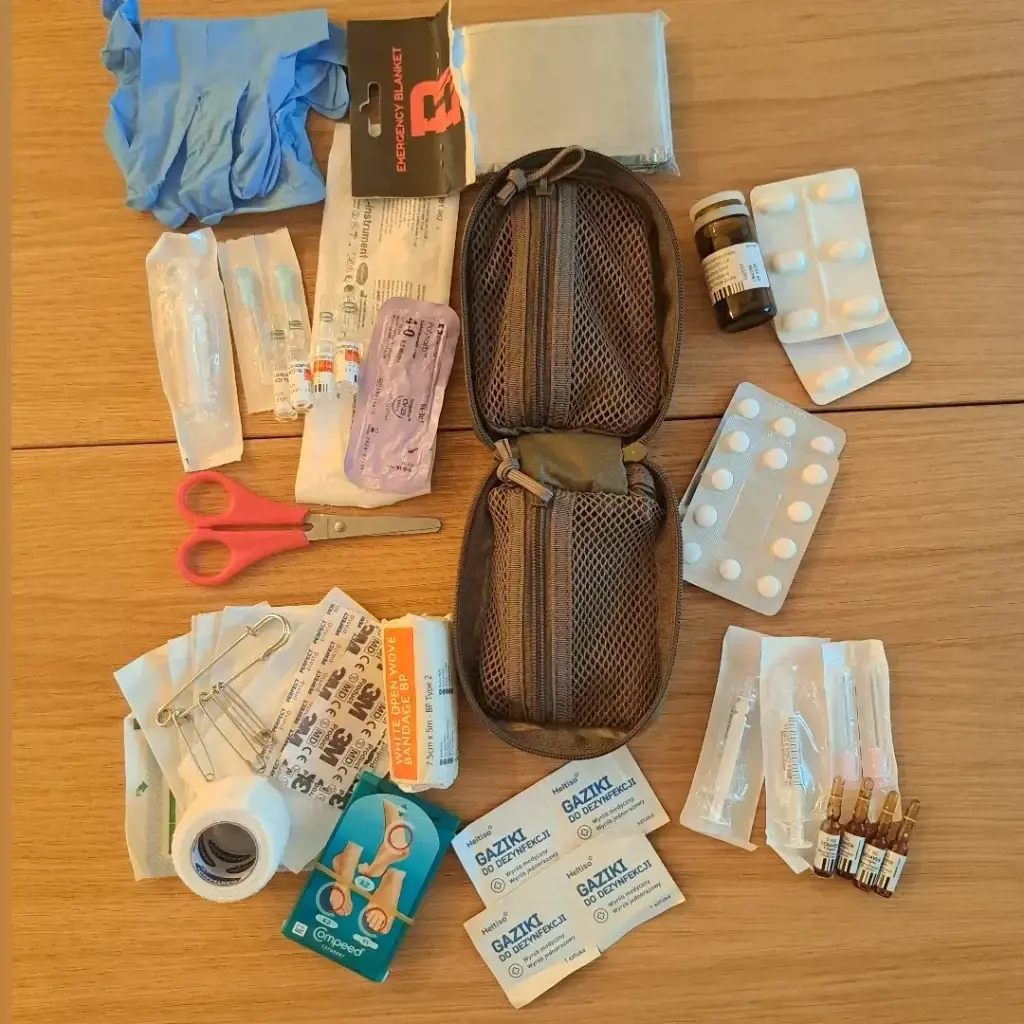
Preparing for a Himalayan trek is an exciting but challenging task. As you embark on this adventure, it is crucial to pack the right medications and first aid supplies to ensure your safety and well-being in such remote and high-altitude environments. In this article, we will discuss some essential items to include in your medical kit for a Himalayan trek.
The first and most important item to include in your medical kit is medication for altitude sickness. As you ascend to higher altitudes, the decreased oxygen levels can cause symptoms such as headache, dizziness, nausea, and fatigue. Acetazolamide, a medication commonly used for altitude sickness, can help prevent and alleviate these symptoms. However, it is essential to consult with a healthcare professional before taking any medication, as they can provide guidance on proper dosage and potential side effects.
In addition to altitude sickness medication, it is vital to pack general over-the-counter medications for common ailments that may occur during the trek. These may include pain relievers such as ibuprofen or acetaminophen for headaches or muscle aches, anti-diarrheal medication for gastrointestinal issues, antihistamines for allergies or insect bites, and a variety of band-aids and dressings for minor cuts and scrapes. It is advisable to pack these medications in a waterproof and labeled container to ensure their effectiveness and easy access during emergencies.
Apart from medications, your medical kit should also include basic first aid supplies. These supplies can help treat minor injuries or provide temporary relief until professional medical assistance is available. Some essential first aid supplies to consider packing include adhesive tape, sterile gauze pads, adhesive bandages, antiseptic wipes or solution, tweezers, scissors, and a digital thermometer. Additionally, it is advisable to carry a small manual on wilderness first aid to familiarize yourself with basic first aid techniques and procedures.
Furthermore, it is crucial to pack any personal prescription medications you may need during the trek. It is recommended to carry an extra supply in case of delays or loss of medication. It is also important to keep your medications in their original packaging with clearly labeled dosages and instructions.
Lastly, it is worth noting that prevention is always better than cure. Before embarking on a Himalayan trek, it is essential to undergo a thorough medical check-up to evaluate your fitness level and address any pre-existing medical conditions. This will help ensure that you are physically prepared for the challenges and reduce the risk of potential medical emergencies during the trek.
In conclusion, packing the right medications and first aid supplies for a Himalayan trek is crucial for your safety and well-being in such remote and high-altitude environments. Acetazolamide and general over-the-counter medications for common ailments are essential to address altitude sickness symptoms and other minor health issues. Basic first aid supplies and personal prescription medications should also be included in your medical kit. Moreover, a thorough medical check-up before the trek is recommended to assess your fitness level and address any pre-existing medical conditions. By being prepared and proactive, you can enjoy your Himalayan trek with peace of mind, knowing that you have taken the necessary precautions to maintain your health and safety.
Essential Items to Pack for a Business Trip to Oslo
You may want to see also

What are some important considerations for packing food and water for a Himalayan trek?
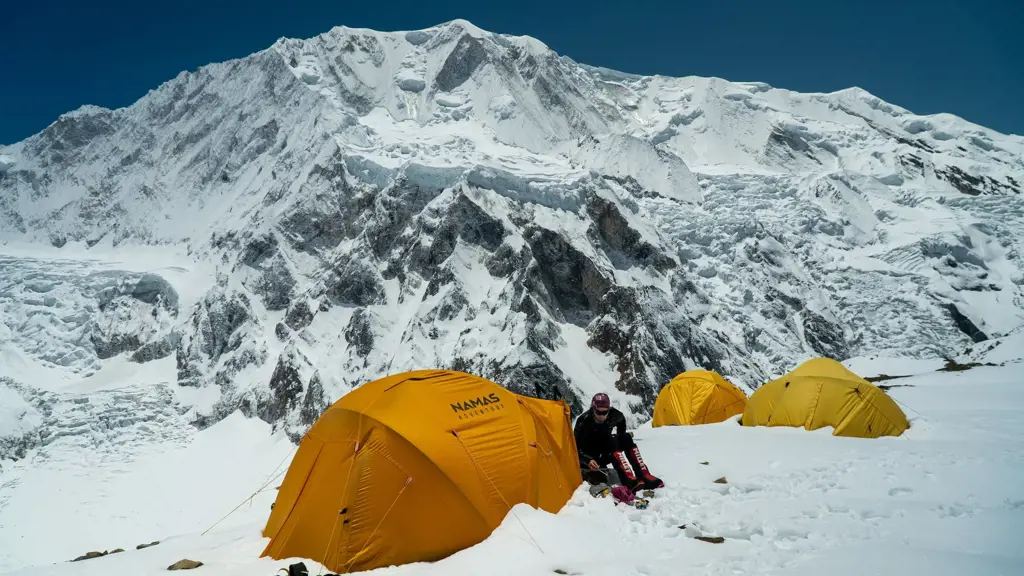
When embarking on a Himalayan trek, it is crucial to pack the right amount of food and water to sustain your energy and maintain hydration throughout the journey. The challenging terrain and high altitudes make it essential to prioritize your nutrition and hydration. Here are some important considerations to keep in mind when packing for a Himalayan trek:
- Caloric needs: Trekking in the Himalayas demands a high level of physical exertion, which means you need to replenish the calories you burn. Aim for nutrient-dense foods that are rich in carbohydrates, proteins, and healthy fats. Pack high-energy snacks like nuts, granola bars, energy bars, and dried fruits. These lightweight and compact options will provide a quick boost of energy when you need it the most.
- Meal planning: Plan your meals ahead of time to ensure you have a balanced diet throughout the trek. Consider incorporating dehydrated meals that are easy to prepare by just adding hot water. These meals are lightweight and provide necessary nutrients. Additionally, pack some instant noodles, rice, and beans, which can be cooked easily with a portable stove or campfire.
- Hydration system: Staying properly hydrated is crucial while trekking in high altitudes. Carry a water bottle or hydration bladder with a capacity of at least two liters. There may be limited or no water sources along the trail, so it's important to refill whenever you have the opportunity. Invest in a good-quality water filter or purifier to ensure you have access to safe drinking water.
- Electrolyte replenishment: Sweating at high altitudes can cause electrolyte imbalances. Pack electrolyte sachets or tablets to mix with your water and maintain your electrolyte levels. These supplements will help prevent muscle cramps and fatigue.
- Snacks for acclimatization breaks: During acclimatization breaks, it's important to consume small snacks that are easy to digest. Opt for foods like energy bars, nut butter packets, or crackers. These snacks will provide a quick source of energy without overloading your stomach.
- Consider local cuisine: If you plan on trying some local cuisine during your trek, research the availability of food options along the trail. Some regions might have limited food choices, and it's important to be prepared with alternative options in case your preferred food is not available.
- Packing essentials: Along with food and water, pack essential items like utensils, a lightweight stove or camping cookware, food storage bags, and a small towel for hygiene purposes. These items will ensure that you can properly store and prepare your food during the trek.
Remember, it is crucial to pack food and water according to the duration and difficulty of your trek. Consult with experienced trekkers or local guides to get an idea of the specific requirements for your trek. Packing the right amount of food and water will help you stay energized, hydrated, and focused on enjoying the breathtaking scenery of the Himalayas.
Essential Items to Pack for Your April Trip to China
You may want to see also
Frequently asked questions
When preparing for a Himalayan trek, it is important to pack the right gear and equipment to ensure a safe and comfortable journey. Some essential items to pack include sturdy hiking boots, warm and waterproof layers such as a thermal jacket, fleece, and waterproof pants, a good quality sleeping bag, a backpack, a hat, gloves, sunglasses, sunscreen, a water bottle, a headlamp, and basic first-aid supplies.
While it is not mandatory to bring trekking poles for a Himalayan trek, they can be extremely helpful in providing stability and reducing strain on your legs and knees, especially when navigating uneven terrain or steep ascents and descents. Trekking poles also help to improve balance and can provide additional support when crossing streams or slippery surfaces.
It is important to wear layered clothing that can be easily adjusted according to the changing weather conditions in the Himalayas. Start with a moisture-wicking base layer to keep you dry and comfortable, followed by insulating layers such as a fleece or down jacket, and a waterproof and windproof outer layer. Avoid cotton clothing as it tends to retain moisture and can make you feel cold.
It is recommended to pack light for a Himalayan trek, as you will be carrying your own backpack for most of the journey. Stick to the essentials and prioritize functionality over fashion. Aim to pack enough clothing for layering, a few pairs of socks and underwear, and travel-sized toiletries. It is also advisable to pack a small backpack for day trips or shorter hikes during the trek.
Choosing the right footwear is crucial for a successful Himalayan trek. Invest in a pair of high-quality, waterproof hiking boots with ankle support to provide stability and protect your feet from rough terrain and unpredictable weather conditions. Make sure your boots are broken in before the trek to avoid blisters and discomfort. It is also recommended to bring a pair of lightweight camp shoes or sandals for resting and exploring around the campsite.







